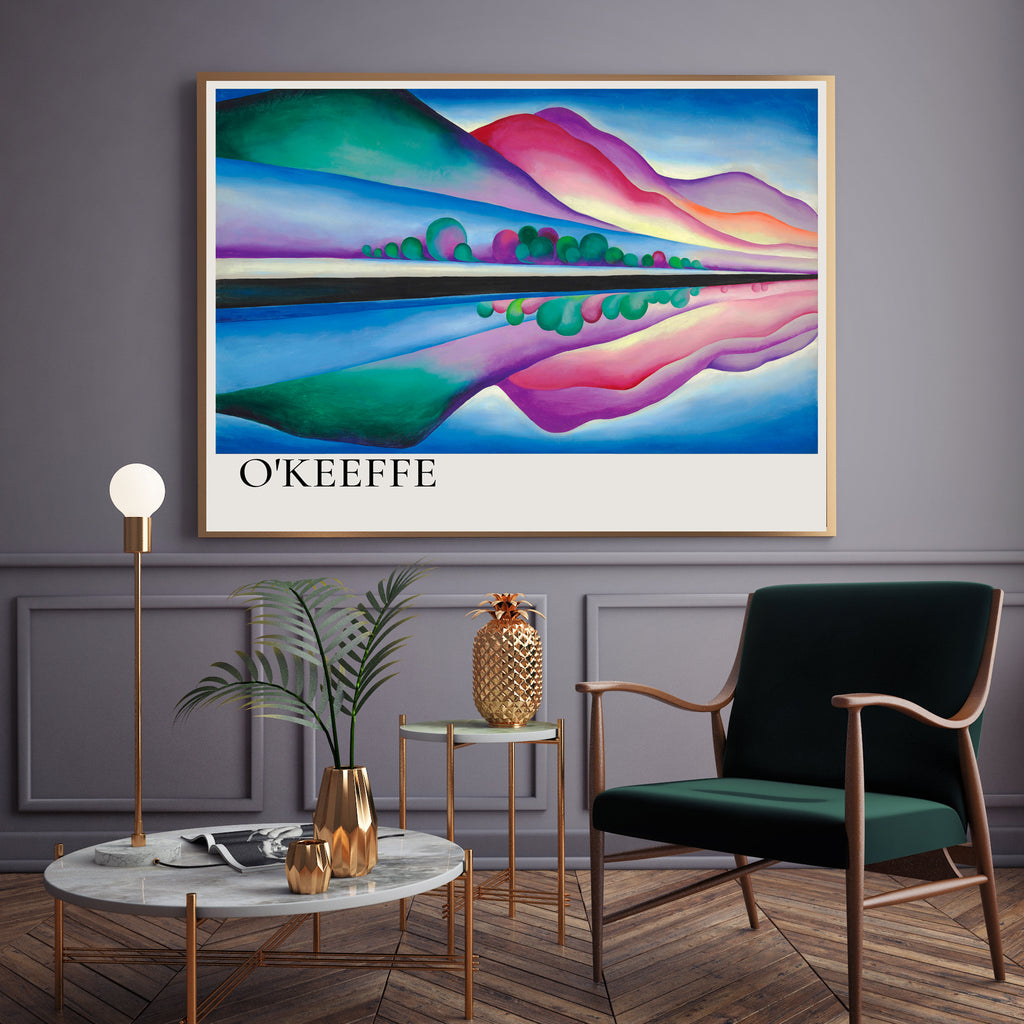Title: Discovering the Artistry of Georgia O'Keeffe
Introduction
Georgia O'Keeffe, an American modernist artist known for her striking and innovative works, is often celebrated as one of the pioneers of American modernism. Her career spanned several decades, and her art continues to captivate audiences with its unique blend of abstraction, nature, and sensuality. In this blog, we will delve into the life and art of Georgia O'Keeffe to gain a deeper understanding of her impact on the art world.
Early Life and Education
Georgia Totto O'Keeffe was born on November 15, 1887, in Sun Prairie, Wisconsin. Growing up on a dairy farm, she developed a deep appreciation for nature, which would later become a significant influence in her artwork. Her early education in art included attending the School of the Art Institute of Chicago and later the Art Students League in New York City.
O'Keeffe's early works included traditional still life and landscape paintings, but she would soon develop a distinctive style that set her apart from her contemporaries.
Landscapes and Abstraction
One of O'Keeffe's notable contributions to the art world was her unique approach to landscapes. She became famous for her enlarged, abstracted views of natural forms, particularly flowers. Her large-scale flower paintings, such as "Jimson Weed" and "Black Iris," are iconic representations of her ability to capture the essence and sensuality of nature.
These works are celebrated for their striking use of color, form, and detail. O'Keeffe's flowers are often interpreted as symbolic representations of female genitalia, although she always maintained that this was not her intent. Nevertheless, her work opened up conversations about feminism and sexuality in art, which were important discussions in the early 20th century.
New Mexico: A Transformative Influence
Georgia O'Keeffe's connection with New Mexico had a profound impact on her art. In 1929, she visited the state, and the landscape, culture, and architecture left an indelible mark on her work. She would spend her summers in New Mexico and later make it her permanent residence.
O'Keeffe's New Mexico paintings are characterized by their depictions of the arid landscapes, adobe architecture, and the bones of animals. These works are not just representations of the physical surroundings but also an exploration of the spiritual and emotional connection she felt with the land. Her "Pelvis" series, in which she painted close-up images of animal bones, is a testament to her deep connection with the desert.
Legacy and Impact
Georgia O'Keeffe's work continues to inspire artists and art enthusiasts worldwide. Her impact on American modernism, especially in her depictions of nature, has left an indelible mark. Her ability to capture the essence of her subjects in a way that transcends mere representation has made her a beloved figure in the art world.
O'Keeffe's legacy is further solidified by the fact that she was a female artist who achieved great success in a male-dominated art world. She broke through the gender barriers of her time and paved the way for future female artists to assert themselves.
Georgia O'Keeffe's art is a testament to the power of interpretation and the capacity of an artist to transcend boundaries. Her ability to capture the beauty of nature, convey sensuality, and explore abstraction has left an enduring mark on the art world. O'Keeffe's legacy serves as a reminder that art is not just about the final product but also the individual's unique perspective and the world they choose to create through their work.
Explore our collection of stunning Georgina O' Keeffe prints now on our website!
www.stanleystreetstreet.co.uk

